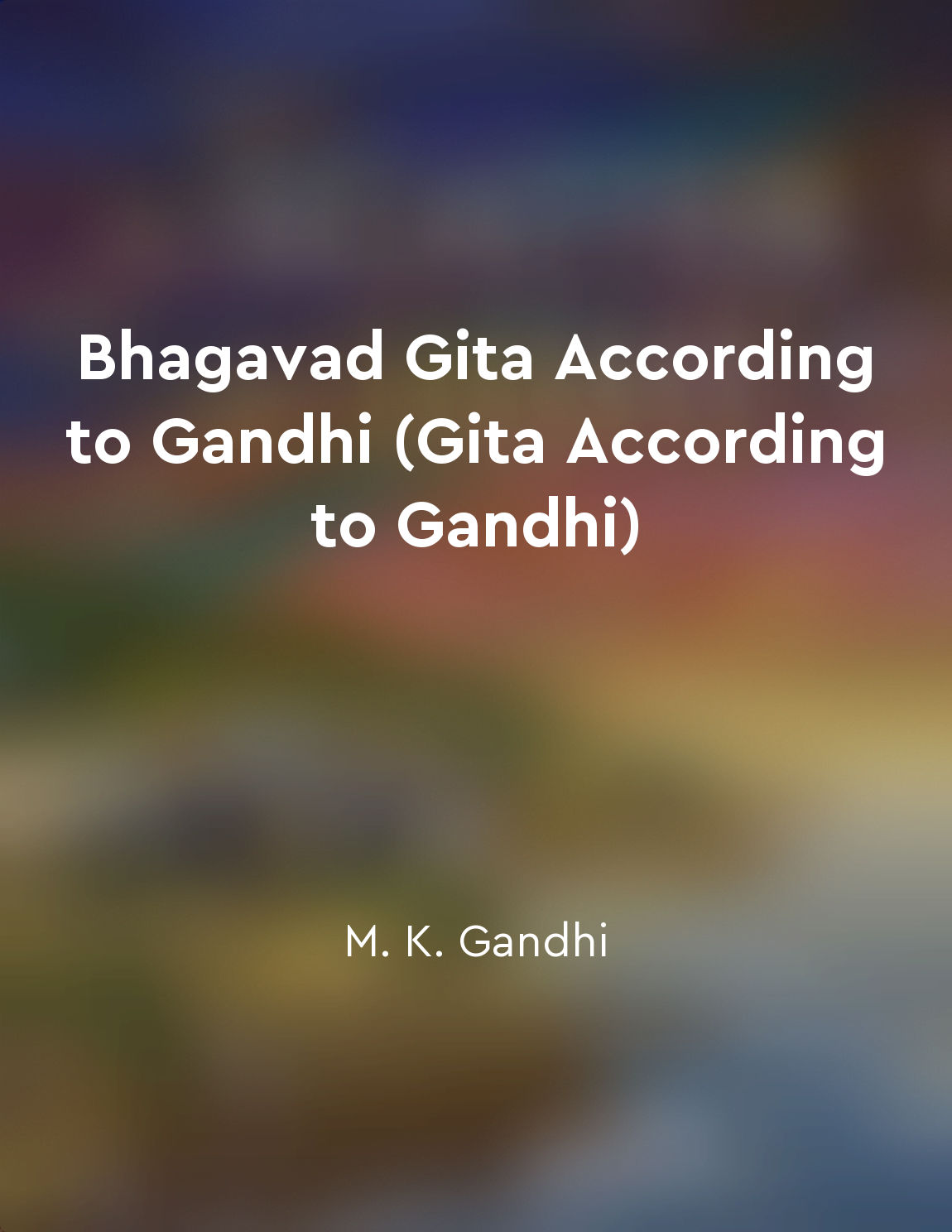True nature of soul discussed from "summary" of The Bhagwat Gita by R. R. Varma
The Bhagwat Gita delves deeply into the true nature of the soul, providing profound insights into this eternal essence that resides within each living being. Through its teachings, the Gita illuminates the soul's eternal nature, its indestructibility, and its connection to the Supreme Being. The Gita explains that the soul is eternal and unchanging, existing beyond the realm of birth and death. It is not affected by the physical body or the transient experiences of life. This eternal nature of the soul transcends time and space, remaining untouched by the passage of time or the fluctuations of the material world. Furthermore, the Gita elucidates the indestructibility of the soul, stating that it cannot be destroyed by weapons, fire, water, or wind. The soul is beyond the reach of destruction, as it is a divine spark that is eternally connected to the Supreme Being. This indestructible nature of the soul reinforces its eternal essence and its divine origins. The Gita also emphasizes the connection between the soul and the Supreme Being, highlighting the soul's inherent relationship with the ultimate source of all existence. Through this connection, the soul finds its true purpose and meaning, aligning itself with the divine will and experiencing a profound sense of fulfillment and harmony. By exploring the true nature of the soul, the Gita provides a roadmap for self-realization and spiritual growth. It encourages individuals to look beyond the material world and connect with their innermost essence, thereby unlocking their true potential and experiencing a deep sense of peace and contentment.- The Bhagwat Gita offers profound insights into the true nature of the soul, shedding light on its eternal essence, indestructibility, and divine connection. Through its teachings, the Gita guides individuals on a transformative journey towards self-realization and spiritual enlightenment, empowering them to realize their true nature and fulfill their highest purpose in life.
Similar Posts
The four stages of life, or ashramas, guide individuals through different life phases
The four stages of life, or ashramas, are an essential aspect of Hindu philosophy. They provide a framework for individuals to ...
Embrace challenges as opportunities for growth
The Bhagavad Gita teaches us to see challenges as opportunities for growth. Every challenge we face in life is an opportunity f...

Renounce selfish desires
The teaching of renouncing selfish desires is central to the Bhagavad Gita. According to this sacred text, selfish desires are ...
Everything is a manifestation of the Supreme Being
The concept of "Everything is a manifestation of the Supreme Being" is a fundamental teaching of the Shrimad Bhagwat Geeta. Acc...

Role of the spiritual master
The spiritual master is the guide, the guru, who helps the disciple navigate the path of spiritual realization. The spiritual m...
Understanding the Geeta can lead to spiritual growth and selfrealization
The Bhagavad Gita is a sacred text that offers profound insights into the nature of life, the self, and the universe. Through i...
The Geeta teaches the importance of maintaining equanimity in all situations
The teaching of the Geeta emphasizes the significance of maintaining equanimity in all circumstances. Equanimity refers to a st...
Attaining liberation through selfrealization
The concept of attaining liberation through self-realization is a central theme in The Bhagwat Gita. It teaches us that true fr...
The true self is never born and never dies
The concept of the true self being eternal is a fundamental teaching in the Bhagavad Gita. According to Lord Krishna, the true ...

